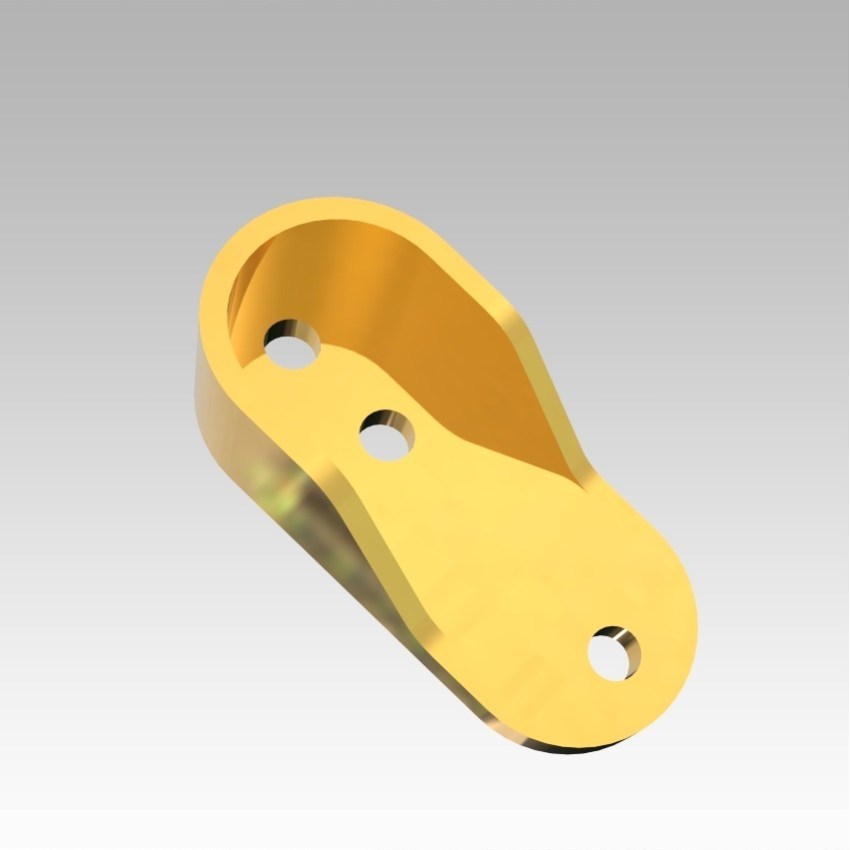Exploring the Benefits of CNC Stainless Steel Parts in Precision Manufacturing
Release time:
2025-02-22
In the realm of precision manufacturing, the significance of CNC (Computer Numerical Control) machining cannot be overstated, especially when it comes to producing stainless steel parts. CNC stainless steel parts are integral to a wide range of industries, including aerospace, automotive, medical, and electronics, due to their strength, durability, and resistance to corrosion. CNC machining employ

In the realm of precision manufacturing, the significance of CNC (Computer Numerical Control) machining cannot be overstated, especially when it comes to producing stainless steel parts. CNC stainless steel parts are integral to a wide range of industries, including aerospace, automotive, medical, and electronics, due to their strength, durability, and resistance to corrosion.
CNC machining employs advanced technology to automate the manufacturing process, allowing for high precision and repeatability. This method has revolutionized the way metal parts are produced, particularly in stainless steel, which is known for its excellent mechanical properties. Stainless steel is an alloy that combines iron with chromium and sometimes other elements to enhance its resistance to rust and oxidation. This characteristic makes CNC stainless steel parts ideal for use in challenging environments where exposure to moisture, chemicals, or extreme temperatures is a concern.
One of the primary advantages of using CNC stainless steel parts is their high degree of accuracy. CNC machines can achieve tolerances of up to ±0.001 inches, which is crucial for components that require precise dimensions for proper fit and function. This level of accuracy is essential in industries such as aerospace, where even the slightest error can lead to catastrophic failures.
Furthermore, the durability of stainless steel means that parts manufactured using this material can withstand significant wear and tear. This longevity reduces the need for frequent replacements, leading to lower maintenance costs and more reliable operation in the long run. Additionally, stainless steel parts are often lightweight yet strong, making them a preferred choice for applications where weight savings are critical without compromising strength.
CNC stainless steel parts can also be customized to meet specific requirements. The flexibility of CNC machining allows manufacturers to create intricate designs and complex geometries that would be difficult or impossible to achieve with traditional machining methods. This adaptability is particularly valuable in industries that require tailored solutions to meet unique performance criteria.
Moreover, the surface finish of CNC stainless steel parts can be enhanced through various treatments, such as polishing, anodizing, or passivation, which further improve their corrosion resistance and aesthetic appeal. These processes not only improve functionality but also contribute to the overall quality of the final product.
In summary, CNC stainless steel parts are an essential component of modern manufacturing, offering unparalleled precision, durability, and customization options. Their ability to withstand harsh conditions while maintaining structural integrity makes them a top choice across various industries. As technology continues to evolve, the capabilities and applications of CNC stainless steel parts are likely to expand, further solidifying their role in the future of precision manufacturing.
CNC machining employs advanced technology to automate the manufacturing process, allowing for high precision and repeatability. This method has revolutionized the way metal parts are produced, particularly in stainless steel, which is known for its excellent mechanical properties. Stainless steel is an alloy that combines iron with chromium and sometimes other elements to enhance its resistance to rust and oxidation. This characteristic makes CNC stainless steel parts ideal for use in challenging environments where exposure to moisture, chemicals, or extreme temperatures is a concern.
One of the primary advantages of using CNC stainless steel parts is their high degree of accuracy. CNC machines can achieve tolerances of up to ±0.001 inches, which is crucial for components that require precise dimensions for proper fit and function. This level of accuracy is essential in industries such as aerospace, where even the slightest error can lead to catastrophic failures.
Furthermore, the durability of stainless steel means that parts manufactured using this material can withstand significant wear and tear. This longevity reduces the need for frequent replacements, leading to lower maintenance costs and more reliable operation in the long run. Additionally, stainless steel parts are often lightweight yet strong, making them a preferred choice for applications where weight savings are critical without compromising strength.
CNC stainless steel parts can also be customized to meet specific requirements. The flexibility of CNC machining allows manufacturers to create intricate designs and complex geometries that would be difficult or impossible to achieve with traditional machining methods. This adaptability is particularly valuable in industries that require tailored solutions to meet unique performance criteria.
Moreover, the surface finish of CNC stainless steel parts can be enhanced through various treatments, such as polishing, anodizing, or passivation, which further improve their corrosion resistance and aesthetic appeal. These processes not only improve functionality but also contribute to the overall quality of the final product.
In summary, CNC stainless steel parts are an essential component of modern manufacturing, offering unparalleled precision, durability, and customization options. Their ability to withstand harsh conditions while maintaining structural integrity makes them a top choice across various industries. As technology continues to evolve, the capabilities and applications of CNC stainless steel parts are likely to expand, further solidifying their role in the future of precision manufacturing.
Key words:





